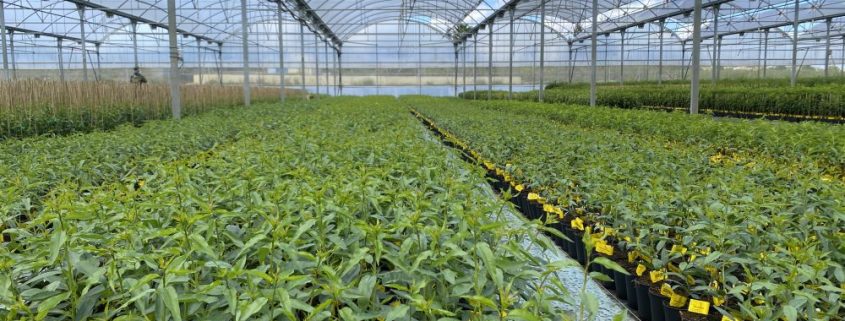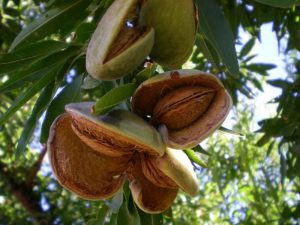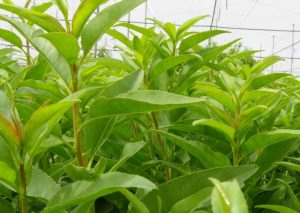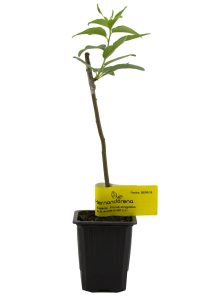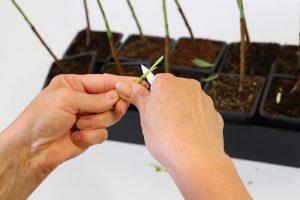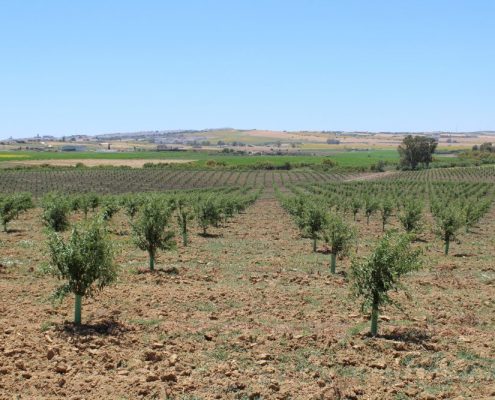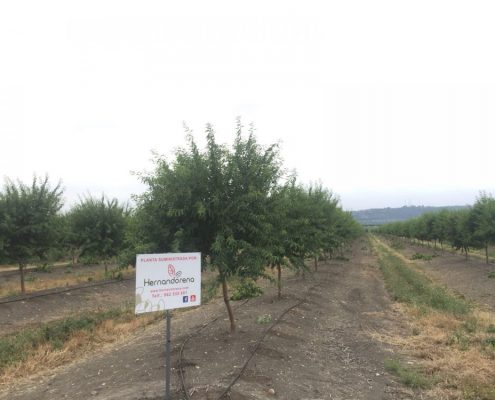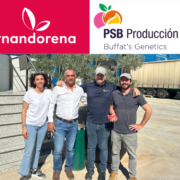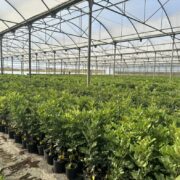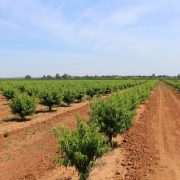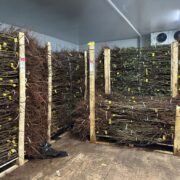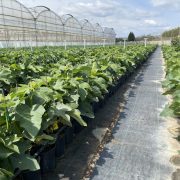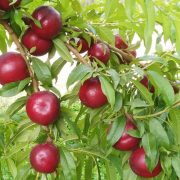Global quality and speed in the supply of almond plants, advantages of V. Hernandorena
The almond is one crop where Viveros Hernandorena is a specialist. They offer potted plants, but with specifications that put this nursery at the forefront: the growing medium, the height of the plant, varietal and clonal availability and speed of supply. Elements that together offer a global and differentiating quality.
Por Marga López, Periodista Agroalimentaria (@MargaLopez77)
After the winter campaign for Viveros Hernandorena, it is time to take stock. A complicated period, initially due to meteorological issues, but also because a certain readjustment is taking place in the production of some species that directly affect the nursery. And to all this, we must add the health crisis due to Covid-19, which although it affected only the last commercial efforts in the export campaign, did make the last shipments difficult, with greater cost overruns and slight delays. “The demand for pomegranates had grown a lot in recent years, and based on this we had forecasts of plant sales. However, this year, firstly due to the DANA of January, which prevented planting on agricultural farms, and then because that pomegranate boom seems to have slowed down, the truth is that our sales have decreased by around 30%. Fortunately, we have seen some spikes in stone fruit trees, and especially in almond trees”, Rosa Hernandorena, commercial director of Viveros Hernandorena, details.
We offer 90 cm almond plants, when the usual is 50 or 60 cm.
It is precisely this diversity of crops, pomegranates, stone fruit, kaki, kiwi, fig and almond, mainly, that allows this nursery to reorient its productive and commercial strategy in the face of the current situation of the markets and the demands of its customers. “The almond is a crop that is gaining ground, continues to grow on the Mediterranean coast and in the interior areas, our sales are focused mainly on the border between Badajoz and Portugal and Andalusia. Large tracts of super intensive crops are being planted, and therefore it is an opportunity for us” explains the commercial director.
Competitive advantage of Viveros Hernandorena in almond tree
One of the great advantages of this nursery in this almond crop is the speed of response when it comes to meeting customer requests. “If we are in the vegetative period, in just two months we can have a plant available to the client.
This is because we have the buds of the varieties and the patterns, we make the micrografts, and we have an exhaustive knowledge of the techniques and the production system of the crop. In addition, the use of the pot allows this flexibility at the time of planting, so that orders can be attended throughout the year, “adds Rosa Hernandorena.
Viveros Hernandorena currently offers the almond plant in a one liter pot, with some modifications compared to other similar products: the pot, with its internal striations, allows for greater root development without coiling, and uses coconut fiber as a means of culture. “This substrate requires a good level of technical cooking and irrigation and fertilization management to ensure good seedling development. It has the advantage of improving the drainage and aeration capacity of the roots. The coconut fiber also allows us to guarantee the health of the plant, “says Rosa Hernandorena, noting that currently the nursery has three technicians responsible for this productive part.
In addition to this culture medium, another of the peculiarities of Viveros Hernandorena is that the plant they commercialize is taller and more trellised. When plants of 50 or 60 centimeters are usual, those offered by this nursery reach a minimum of 90 cm. “In this way, we deliver a more made, more formed plant, adapted for both traditional and super intensive plantations,” she adds.
Patterns and varieties
Unlike what happens in other species, where there are many varieties, in almond the fan is reduced to about 15-20 varieties, a relatively small catalog, which currently allows us to find 90% of them in Viveros Hernandorena. “70% of our almond sales are of the Avijor variety, although we have the capacity to produce any other material, since we have the varietals in our own mother plant field and the grafting patterns in the greenhouse at any time,” he comments. Rosa Hernandorena.
The varieties used today are hybrid, self-fertile and late-flowering materials, factors that guarantee the productivity and good performance of the plots. “We must thank the research centers for all the work they do so that we can have these new improved hybrid materials “Says the commercial director.
As for patterns, the most used is the GF-677. All standards are in vitro cultivation hybrids or laboratory, which is what certifies the highest sanitary and clonal quality.
Global quality
As we can see, there are many factors involved in offering a good quality almond plant, from varietal and pattern selection, to the format of the crop, the production techniques, the culture medium. As Rosa Hernandorena affirms: “All the elements are important to achieve a product with many positive details agronomically speaking.”




